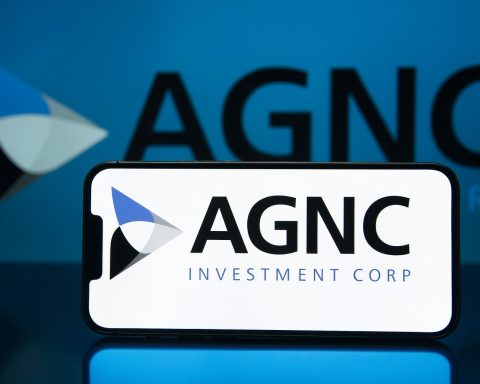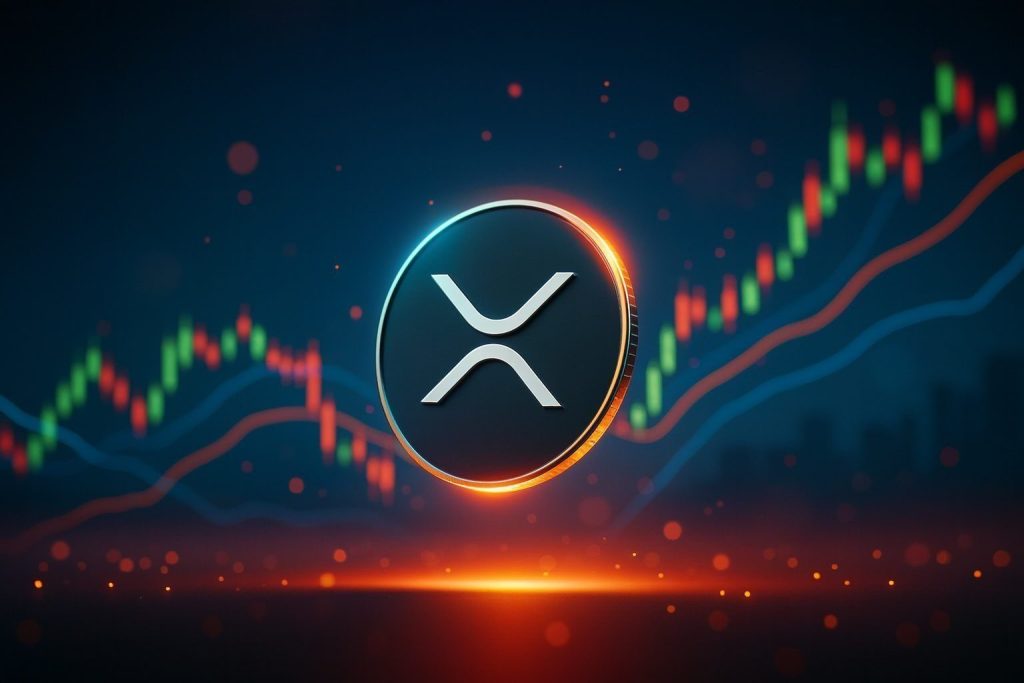Toronto – November 25, 2025 – Canada’s main stock index inched higher again on Tuesday, keeping the Canadian stock market pinned near record territory as investors leaned into the prospect of a U.S. Federal Reserve rate cut in December and digested major mining and real estate headlines.
The S&P/TSX Composite Index finished the session at 30,698.51, up 0.31%, after trading between roughly 30,572 and 30,739 over the day. That follows Monday’s strong 1.47% gain to 30,604.35, and leaves the index only a shade below its all‑time closing high around 30,828 set on November 13. [1]
While large‑cap blue chips continued to grind higher, the S&P/TSX Venture Composite Index — home to many junior mining and energy names — slipped 0.26% to 878.22, giving back a sliver of Monday’s 3.01% surge. [2]
Under the surface, Tuesday’s trade was driven by three big themes:
- Growing conviction that the Fed will cut U.S. interest rates in December
- A landmark US$430 million settlement between Barrick and the government of Mali
- Reports that Canada and India are closing in on a US$2.8 billion uranium export deal likely involving Cameco
Let’s break down what moved the Canadian stock market today — and what it might mean next.
Market snapshot: TSX extends rally toward record territory
The day started quietly, with the S&P/TSX Composite up only marginally at the open:
- At the opening bell, the index rose about 19.6 points (0.06%) to 30,623.96, according to a brief Reuters market update. [3]
- Just minutes later, a fuller Reuters note put the index up 0.2% at 30,655.90, led by consumer staples stocks. [4]
As the session wore on, risk appetite strengthened alongside global markets:
- Data from Investing.com show the TSX ultimately closed at 30,698.51, up 0.31%, with an intraday range between 30,571.95 (low) and 30,739.47 (high) and volume of about 45 million shares. [5]
- That builds on Monday’s powerful 1.47% jump and keeps the index just below the record closing high of 30,827.58 reached on November 13. [6]
On a longer horizon, the TSX’s run has been impressive:
- Over the past 12 months, the S&P/TSX Composite has delivered about a 23.6% total return, and is up roughly 26.7% year‑to‑date, according to YCharts. [7]
The TSX Venture told a slightly different story:
- The small‑cap benchmark ended at 878.22, down 0.26% on the day, after Monday’s nearly 3% leap to 880.47. [8]
- That pattern — a hot rebound followed by a breather — is typical of junior mining and early‑stage resource names, where sentiment swings fast.
Fed rate‑cut hopes keep risk appetite alive
The single biggest macro driver for Canadian stocks right now is interest‑rate optimism south of the border.
On Monday, U.S. equities surged as investors piled back into big technology names on the belief that the Federal Reserve is likely to cut its policy rate in December. Canadian markets rode that same wave, delivering Monday’s more‑than‑300‑point jump in the TSX. [9]
Those expectations firmed further on Tuesday:
- A global Reuters market wrap noted that Fed officials have “breathed more life” into expectations of a December cut, with CME FedWatch data showing markets pricing roughly an 81% chance of a quarter‑point reduction next month — up sharply from about 42% a week earlier. [10]
- A separate Reuters piece focused on Canada reported that S&P/TSX Composite futures were up about 0.2% early Tuesday, citing 73% odds of a December Fed cut and flagging delayed U.S. economic data on retail sales, producer prices and consumer confidence as the next catalysts. [11]
Lower‑for‑longer U.S. rates tend to support:
- Equities overall, by reducing the attractiveness of bonds
- Rate‑sensitive sectors on the TSX, such as financials, utilities and REITs
- Commodity prices, especially gold and other perceived hedges
On the commodity front:
- Reuters reported Brent crude oil trading around US$63.14 per barrel, down modestly on worries about 2026 oversupply.
- Gold futures slipped about 0.1% to roughly US$4,135 an ounce, though the metal remains up nearly 3% for November. [12]
That mix — slightly softer commodities but growing rate‑cut optimism — produced a fairly broad‑based, if not explosive, move higher on the TSX.
Miners in the spotlight: Barrick settlement and uranium deal lift sentiment
Barrick resolves Mali dispute with a US$430 million deal
One of the day’s most closely watched developments for Canadian investors came from Barrick, the gold heavyweight.
- Barrick confirmed it has reached a comprehensive agreement with Mali’s government resolving a two‑year dispute over the Loulo‑Gounkoto gold complex, one of Africa’s marquee gold assets. [13]
- According to Reuters and other outlets, Barrick will pay 244 billion CFA francs (about US$430 million) as part of the settlement, with a portion structured through tax credits and previous payments. [14]
- The deal includes an end to all litigation on both sides, the release of previously detained employees and the return of gold that had been seized during the dispute. [15]
Markets liked the clarity:
- GuruFocus reported that Barrick’s shares soared roughly 8.5% on Monday, hitting a 13‑year high after the resolution was announced. [16]
- With the overhang of legal risk now fading, investors are refocusing on Barrick’s cash‑generation potential in a still‑elevated gold price environment.
Cameco benefits from looming Canada–India uranium pact
Uranium names were another bright spot in today’s Canadian market narrative.
Multiple reports — including Reuters, The Northern Miner and major Indian business media — said Canada and India are close to finalizing a uranium export agreement worth about US$2.8 billion. [17]
Key details from those reports:
- The deal would run for approximately 10 years, with Cameco expected to supply uranium to fuel India’s nuclear power plants. [18]
- The agreement appears to be part of a broader thaw in diplomatic relations between Ottawa and New Delhi.
A TradingView/Trading Economics market recap noted Cameco shares gaining more than 1% as the story circulated, with uranium equities helping to support the resource‑heavy TSX. [19]
Gold and uranium themes support the TSX
Put together, the Barrick settlement and uranium‑deal headlines reinforced a broader narrative:
- Gold miners: Benefit from both strong bullion prices and the removal of operational uncertainty in Mali.
- Uranium producers and explorers: Gain a demand story anchored in long‑term nuclear fuel contracts rather than short‑term spot price volatility.
This is particularly important for Canada, where mining and energy make up a significant share of the TSX Composite and the TSX Venture, and where investor sentiment often tracks headline risk in those sectors.
Rails, banks and consumer stocks support the advance
Tuesday’s gains were not all about metals. Railways, banks and consumer staples also played a starring role.
A Trading Economics / TradingView market note on the TSX highlighted several key movers: [20]
- Canadian Pacific Kansas City (CP) and Canadian National Railway (CNR) each climbed just over 1%, benefiting from optimism about economic growth and trade flows.
- In financials, Bank of Nova Scotia and Manulife Financial added around 1%, continuing the sector’s rebound as rate‑cut expectations eased worries about funding costs and credit quality.
- Agnico Eagle, another prominent gold miner, also advanced, riding the same sentiment tailwinds that boosted Barrick.
Beyond those movers:
- A separate piece from Kalkine Media pointed to Bank of Montreal (BMO) as a bank whose shares have gained “noticeable traction” year‑to‑date, with the stock seen as closely tied to TSX Composite trends and benefiting from digital‑banking and efficiency initiatives. [21]
These dynamics underscore a classic late‑cycle pattern:
- Cyclicals like railways perk up on hopes of a soft economic landing.
- Financials recover as the outlook for credit losses stabilizes and bond yields drift lower.
- Defensive sectors — such as consumer staples — still attracted buyers at the open, according to Reuters, as investors remain cautious about potential volatility around upcoming U.S. data releases. [22]
Real estate shake‑up: H&R REIT pivots away from offices
Real estate was also in focus after H&R REIT announced a significant portfolio reshuffle.
In a press release carried by the Financial Times markets page, the trust said it has signed binding agreements to sell a package of retail and office properties in Canada and the United States for total gross proceeds of about C$1.5 billion. [23]
Key elements of the transaction:
- The assets are being sold at valuations roughly in line with their IFRS carrying values, suggesting no major write‑downs on the block. [24]
- Net proceeds of around C$1.1 billion are earmarked primarily for debt reduction, meaning lower leverage and more balance‑sheet flexibility. [25]
- Following the sales, residential and industrial properties will represent about 83% of H&R’s portfolio, up from roughly 69% today — a clear shift away from structurally challenged office and certain retail assets. [26]
- The REIT also signaled plans for a normal course issuer bid (NCIB) of up to C$200 million, giving management the option to buy back units if they view the market price as attractive. [27]
For the TSX real estate complex, this move sends several signals:
- Office risk is still being actively reduced by sophisticated players.
- Investors may begin to re‑rate diversified REITs that can pivot toward more resilient segments like apartments and logistics.
- The combination of deleveraging plus buybacks could be supportive for H&R’s unit price over the medium term, even if near‑term funds‑from‑operations dip as assets are sold.
Financial inclusion meets markets: TD’s new Indigenous banking offer
While not a direct trading catalyst today, TD Bank Group released a notable announcement that intersects with both financials and ESG‑focused investing.
In a media release, TD said it is expanding its low‑cost and no‑cost banking options for Indigenous Peoples in Canada: [28]
- Beginning November 28, 2025, the TD Minimum Chequing Account will be available with no monthly fee for Indigenous Peoples from Canada.
- The account includes 12 debit transactions per month, no Interac e‑Transfer fee when sending funds, no minimum balance requirement, and a C$0 monthly fee on overdraft protection, among other features. [29]
- TD is also broadening a policy that excludes most public transit purchases from customers’ transaction countson several everyday banking accounts, making commuting more affordable. [30]
- The changes are aligned with the Financial Consumer Agency of Canada’s updated voluntary commitment on low‑ and no‑cost accounts, which takes effect December 1, 2025. [31]
From a market perspective, initiatives like this matter because:
- They support long‑term deposit growth and customer loyalty in a key demographic.
- They bolster a bank’s reputation and ESG profile, something institutional investors increasingly track.
- They show that Canadian banks are preparing for a more competitive retail environment, where accessibility and inclusion can be differentiators as rates eventually move lower.
Small caps and the TSX Venture: fundraising and drilling news
While the big index hugged record highs, the TSX Venture reminded investors that small‑cap resource stocks live in their own world — one dominated by drilling updates and financings.
Tower Resources: advancing the Rabbit North gold project
Tower Resources reported solid progress at its Rabbit North gold project in British Columbia: [32]
- The company has completed six diamond drill holes totaling 1,756 metres at its Blue Sky discovery zone, as part of a planned 3,000‑metre program.
- The rig is now moving to the Thunder North area, where previous drilling returned multi‑gram gold intercepts over tens of metres.
- Management noted the program is ahead of schedule and under budget, and hinted it may drill additional holes before the holiday break.
For speculators, this keeps Rabbit North firmly on the radar as one of the more active B.C. gold exploration stories this winter.
Total Metals Corp: C$6 million flow‑through financing
On the financing side, Total Metals Corp. (TSX‑V: TT) announced a sizable non‑brokered flow‑through placement: [33]
- The company aims to raise up to C$6 million through a mix of critical minerals flow‑through units, national flow‑through units and Manitoba flow‑through units, priced around C$1.05–1.15 per unit.
- Proceeds will fund exploration at its Electrolode, High Lake and West Hawk Lake projects in the Red Lake and Manitoba–Ontario region.
- Flow‑through structures allow Canadian investors to deduct eligible exploration expenses from taxable income, making them a favourite tool for funding junior miners.
Name changes, financings and more across the Venture space
Other notable small‑cap headlines included:
- Mineral Hill Industries (TSX‑V: MHI) will change its name to Gold Strategy Inc. and begin trading under the new ticker “GST” around November 27, 2025, with no change to its corporate structure. [34]
- VanadiumCorp Resource Inc. (TSX‑V: VRB) reported closing the first tranche of a flow‑through financing after receiving conditional TSX Venture approval, part of its push to advance Canadian critical‑minerals projects. [35]
These kinds of announcements rarely move the main TSX Composite, but they shape sentiment on the TSX Ventureand offer a window into:
- Where exploration dollars are flowing (gold, uranium, battery metals).
- How receptive the market still is to high‑risk capital raises in a post‑rate‑hike environment.
What today’s moves mean for Canadian investors
Putting it all together, here are the takeaways from November 25, 2025 on the Canadian stock market:
- The TSX remains in a powerful uptrend
- After closing 0.31% higher at 30,698.51, the index is still near its record high around 30,828 and has delivered over 23% total returns in the past year. [36]
- Fed policy is the main macro driver
- Markets are now pricing roughly a three‑in‑four to four‑in‑five chance of a December Fed rate cut, which supports equities, especially in interest‑sensitive sectors like financials and REITs. [37]
- Mining remains central to the Canadian story
- The Barrick‑Mali settlement and the prospective Canada–India uranium deal highlight how deeply TSX performance is tied to global resource politics and long‑dated contracts. [38]
- Sector leadership is broadening
- With rails, banks, gold miners and consumer staples all contributing, the rally is no longer confined to tech or a single theme — often a healthier sign than narrow leadership. [39]
- Corporate actions are reshaping the landscape
- H&R REIT’s C$1.5 billion asset sale marks a continued retreat from traditional office and retail.
- TD’s Indigenous banking initiative and Metro’s renewed buyback (via a new normal‑course issuer bid) underline how large Canadian companies are using balance‑sheet strength to both return capital and address social priorities. [40]
- Small caps still hinge on financing and drilling success
- Activity at Tower Resources, Total Metals, VanadiumCorp and others shows that the flow‑through financing ecosystem is alive, though price action remains volatile on the TSX Venture. [41]
A quick note for investors
None of this is a recommendation to buy or sell any specific security. But if you follow the Canadian market, today is a textbook example of how:
- Global monetary policy (Fed expectations),
- Company‑specific catalysts (Barrick, H&R, TD), and
- Sector‑level flows (rails, banks, miners, small caps)
all intersect to move the TSX.
Staying on top of those threads — and understanding how they fit your own risk tolerance and time horizon — is key to navigating what could be a very eventful final stretch of 2025 for Canadian stocks.
References
1. www.investing.com, 2. www.investing.com, 3. www.tradingview.com, 4. www.tradingview.com, 5. www.investing.com, 6. au.investing.com, 7. ycharts.com, 8. www.investing.com, 9. halifax.citynews.ca, 10. www.reuters.com, 11. www.reuters.com, 12. www.reuters.com, 13. www.barrick.com, 14. www.reuters.com, 15. www.barrick.com, 16. www.gurufocus.com, 17. www.reuters.com, 18. m.economictimes.com, 19. www.tradingview.com, 20. www.tradingview.com, 21. kalkinemedia.com, 22. www.tradingview.com, 23. markets.ft.com, 24. markets.ft.com, 25. markets.ft.com, 26. markets.ft.com, 27. markets.ft.com, 28. td.mediaroom.com, 29. td.mediaroom.com, 30. td.mediaroom.com, 31. td.mediaroom.com, 32. investingnews.com, 33. nai500.com, 34. markets.ft.com, 35. investingnews.com, 36. www.investing.com, 37. www.reuters.com, 38. www.barrick.com, 39. www.tradingview.com, 40. markets.ft.com, 41. investingnews.com







